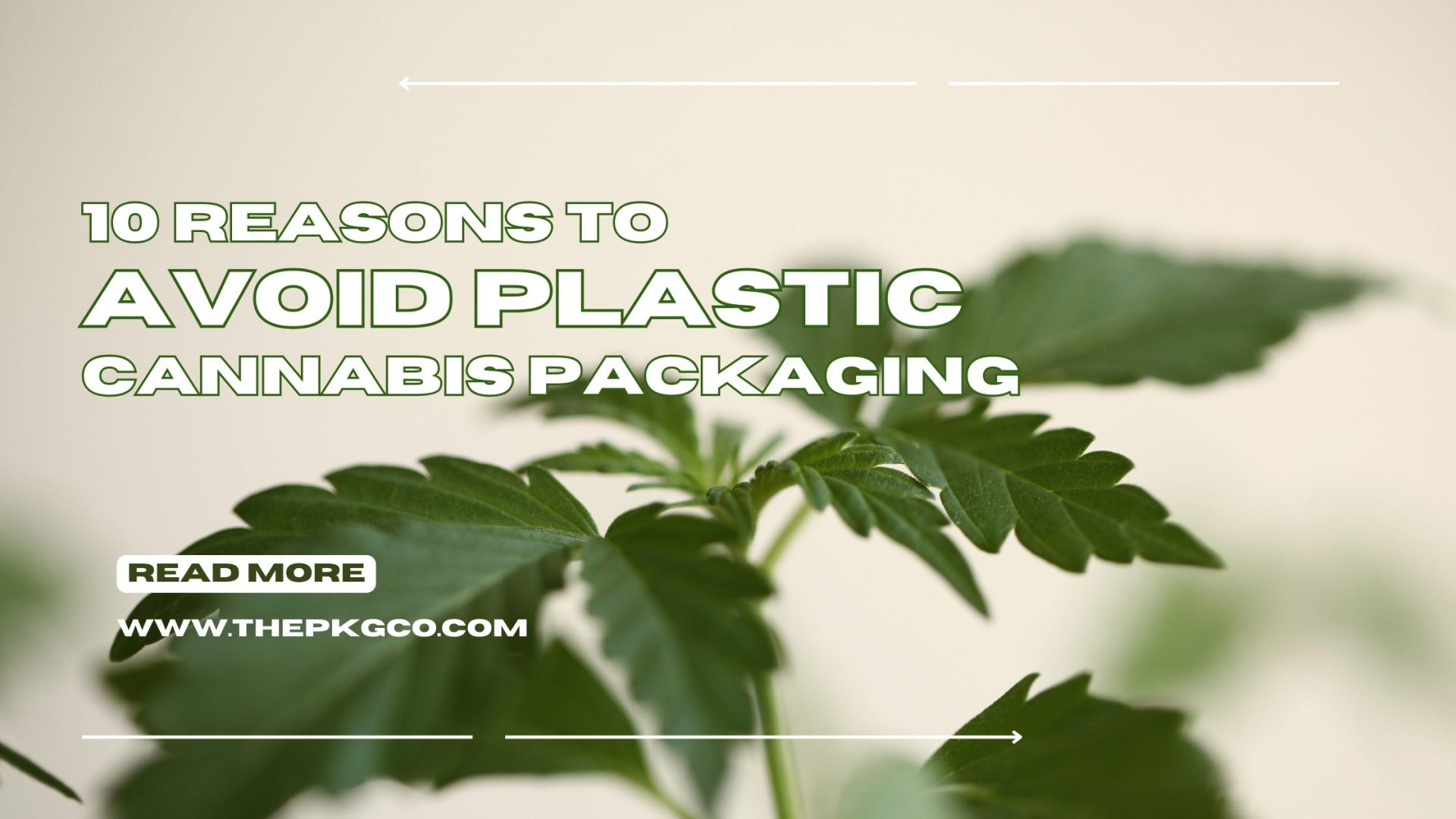The cannabis industry is rapidly evolving, with packaging playing a crucial role in maintaining product integrity and shaping consumer perceptions. Plastic packaging, a common choice for many brands, is under scrutiny for its multiple drawbacks. Here’s an in-depth look at why plastic packaging is increasingly seen as unsuitable for cannabis products.
1. Chemical Leaching
One of the most alarming issues with plastic packaging is its tendency to leach chemicals like BPA, phthalates, and even heavy metals into cannabis products. These chemicals, known for their endocrine-disrupting effects, pose significant health risks, particularly when packaging is exposed to varying temperatures. In contrast, tin and aluminum are inert materials that do not react with cannabis, making them safer options for long-term storage (Environmental Health Perspectives).
2. Loss of Potency and Flavor
The permeability of plastic to air and moisture can lead to the oxidation of cannabinoids and the evaporation of terpenes, essential compounds that define the product’s potency and flavor profile. Studies have shown that airtight metal packaging can significantly preserve these compounds, enhancing the shelf life and consumer experience of cannabis products (Journal of Agricultural and Food Chemistry).
3. Inconsistent Humidity Levels
Cannabis quality is highly dependent on controlled humidity levels. Plastic’s inability to maintain consistent humidity can result in products becoming too dry or, conversely, promoting mold growth. Metal containers, with their superior sealant properties, ensure optimal humidity control, safeguarding product quality (Mold & Bacteria Consulting Laboratories).
4. UV Light Degradation
UV light can degrade THC and other cannabinoids, reducing the efficacy and shelf life of cannabis. Plastic packaging often offers minimal protection against UV light. On the other hand, tin and aluminum containers provide excellent UV protection, preserving the cannabis’s active ingredients (Cannabis and Cannabinoid Research).
5. Environmental Impact
The environmental toll of plastic production and disposal is well-documented, contributing to pollution and harming wildlife. Tin and aluminum are more sustainable choices, being both recyclable and having a lower environmental impact over their lifecycle (Environmental Protection Agency).
6. Limited Branding Potential
In a market that values brand differentiation, plastic packaging often falls short in conveying a premium image. Metal packaging offers vast customization options, from sleek designs to embossing, allowing brands to stand out and appeal to luxury-conscious consumers (Packaging World).
7. Reduced Durability
Plastic containers are susceptible to damage, from crushing to tearing, which can compromise the safety and integrity of cannabis products. Metal packaging, renowned for its durability, provides robust protection, ensuring that products are delivered to consumers in their intended state.
8. Temperature Sensitivity
Plastics are prone to deformation and toxin release at high temperatures, posing risks during transport or storage. Metal’s temperature-resistant properties eliminate these concerns, ensuring product and consumer safety under various conditions.
9. Inadequate Odor Control
The unique aroma of cannabis is a key quality attribute that needs preservation. Plastic often fails to contain these odors effectively, leading to potential discretion and quality issues. Conversely, with its airtight seals, metal packaging excels in odor control, maintaining the product’s integrity and consumer appeal.
10. Compliance Challenges
Navigating the stringent regulatory landscape of the cannabis industry, especially regarding child resistance, is challenging with plastic packaging. Metal packaging solutions are readily designed to meet and exceed these standards, providing both brands and consumers safety and peace of mind.
Conclusion
As the cannabis industry continues to grow and mature, shifting away from plastic towards more sustainable and protective packaging options like tin and aluminum becomes increasingly imperative. These alternatives address the critical issues of plastic packaging, from health and safety to environmental sustainability and branding. By choosing more sustainable packaging, cannabis brands can ensure product integrity, enhance consumer trust, and demonstrate a commitment to quality and responsibility. This strategic choice benefits the brands and consumers and contributes positively to the broader environmental landscape.
Interested in sustainable tin and aluminum options? Contact us today at [email protected]!



